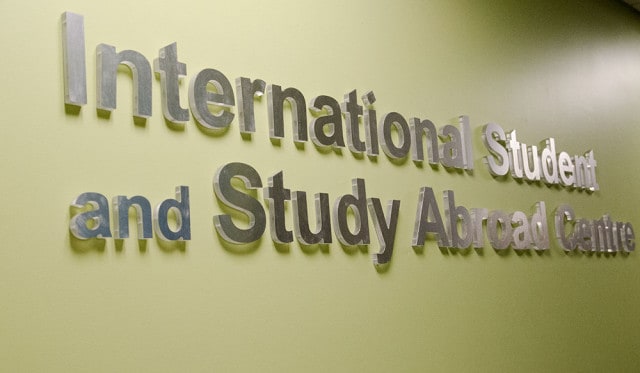DAVIDA BENTHAM

How connected are you to the International Student and Study Abroad Centre or the Aboriginal Students’ Centre? Maybe it’s time to make some new friends.
What does it mean to be a multicultural campus?
We have over 2,000 international students at the University of Saskatchewan during any given semester and roughly 1,700 aboriginal students. But what do we really know about each other beyond basic cultural foods and dances? We need to move from being ignorant to being educated about different cultures on our campus.
The stereotypical knowledge is that Aboriginal Peoples like bannock and stew while Chinese people like dim sum. Is that it? I don’t think so. We need to find ways to get past the tip of the cultural iceberg and really get to know one another for the people we are and where we come from.
We can be proud members of our own distinct cultural communities, but we should also work toward a wider campus community where people of different cultures interact and share experiences.
The International Student and Study Abroad Centre, in partnership with the Aboriginal Students’ Centre, is tackling these larger questions and building these relationships.
This semester, an inaugural partnership between these two groups and the Student and Enrolment Services Division began with the aim to provide a space and place to learn about other indigenous and non-indigenous cultures, dispel myths, ask questions, promote commonalities and respectfully understand our cultural differences.
The program is called Sāpo Nistohtamowin — From the Roots Up: An Aboriginal Students’ Centre & International Student and Study Abroad Centre Partnership. “Sāpo Nistohtamowin” is Plains Cree and is roughly translated into “learning by understanding,” which is the exact approach this relationship has taken in bridging together those from differing backgrounds.
The connection between these services at the U of S has facilitated a number of events this semester. Campus recreational basketball and volleyball teams were made and other recreational sports nights were held all in an effort to get students literally playing on the same field.
From family fun days in Rotary Park to bingo or movie nights, there are many ways for multicultural communities to connect and get to know one another.
Most recently, the Sāpo Nistohtamowin partnership has moved into an area of understanding and sharing through a building bridges series — a succession of learning through stories and truths.
Although these events are planned with an emphasis placed on international and aboriginal students, other members of the campus community are encouraged to attend. Truly, these events will be all the more culturally rich and diverse if other students from different backgrounds attend.
Sāpo Nistohtamowin also hosts workshops on a variety of topics. Most recently, there was a lesson given about appreciative inquiry by Idle No More founder Sheelah McLean. In another instance a cultural competency workshop was lead by the ASC’s Cultural Liaison Dion Tootoosis. Team building activities such as these are positive steps forward in creating connections on campus through knowledge sharing.
Emphasis has been placed on bridging the aboriginal and international communities because of the possible tension that arises due to a poorly understood idea of competition for resources, employment and education amongst other things. In reality, these two groups have a great deal in common and should be working together instead of against each other.
At the Institute for Community Peace Building in Winnipeg, Man., a cutting edge program is being carried out that bridges newcomer and aboriginal youth. This program claims that, “Like all incidents of racism, ignorance is an important factor. Immigrants are often unfamiliar with the root cause of aboriginal struggle, residential schooling and colonization.”
Another example is the Immigrants in Support of Ide No More group. This movement, strongest in Vancouver, B.C. and led by local activist Harsha Walia, ties the similar experiences of Indigenous Canadians with those of immigrants, which she says is highlighted by the endurance of decades if not centuries of colonialism, empire, racism, impoverishment and displacement.
With more programs and individuals shedding light on these issues, the future looks bright for bridging communities on our campus and in our nation — but we all need to do our part in building these relationships.
The ISSAC and ASC partnership hopes to create a safe space for sharing experiences through conversation circles that run Thursday evenings on Nov. 21st and 28th from 5 p.m. to 7 p.m. Contact davida.bentham@usask.ca or janelle.pewapsconias@usask.ca for more information.
—
Photo: Jordan Dumba/Photo Editor